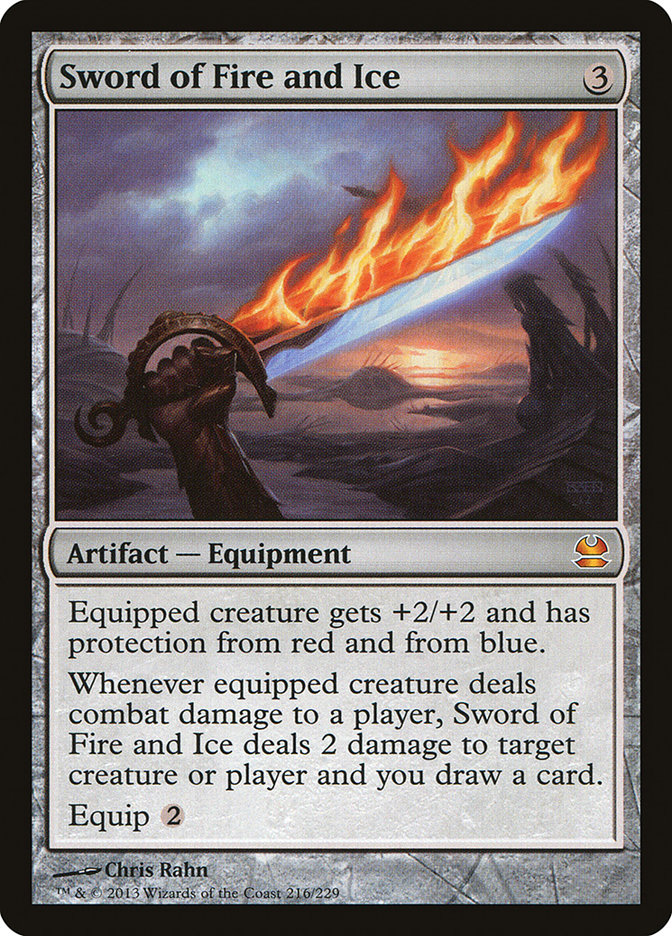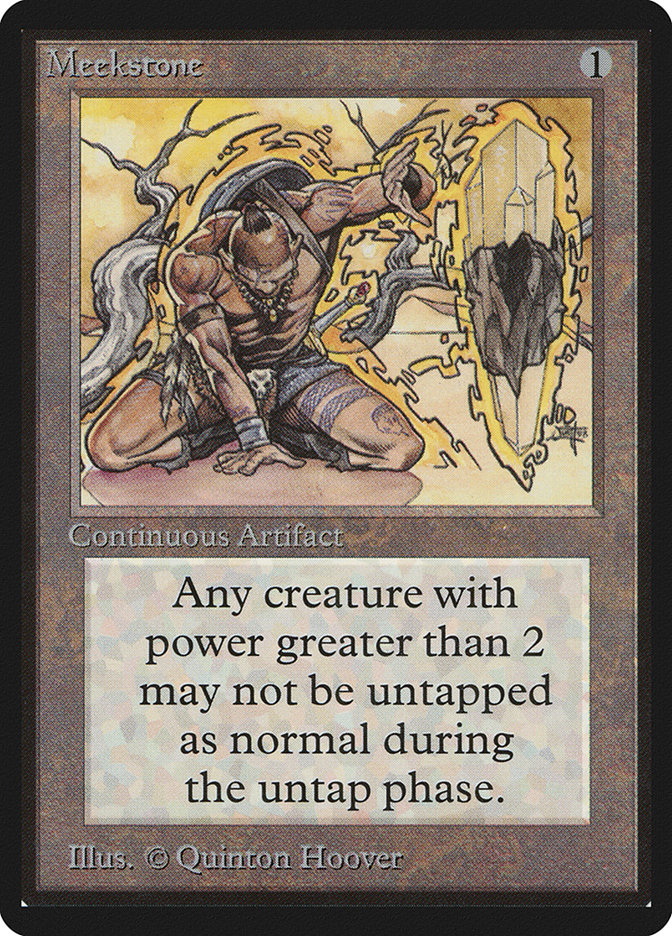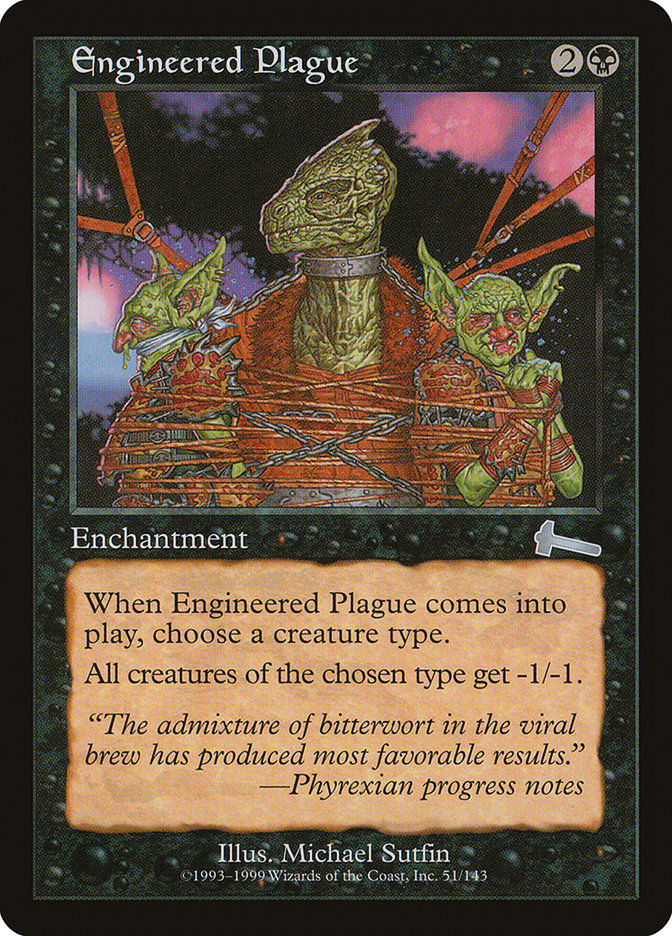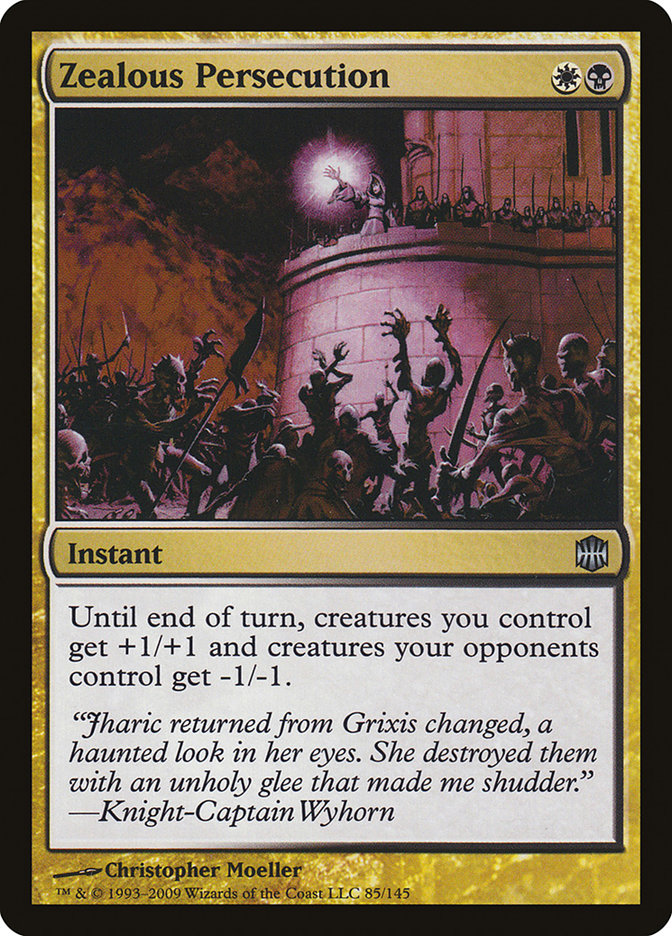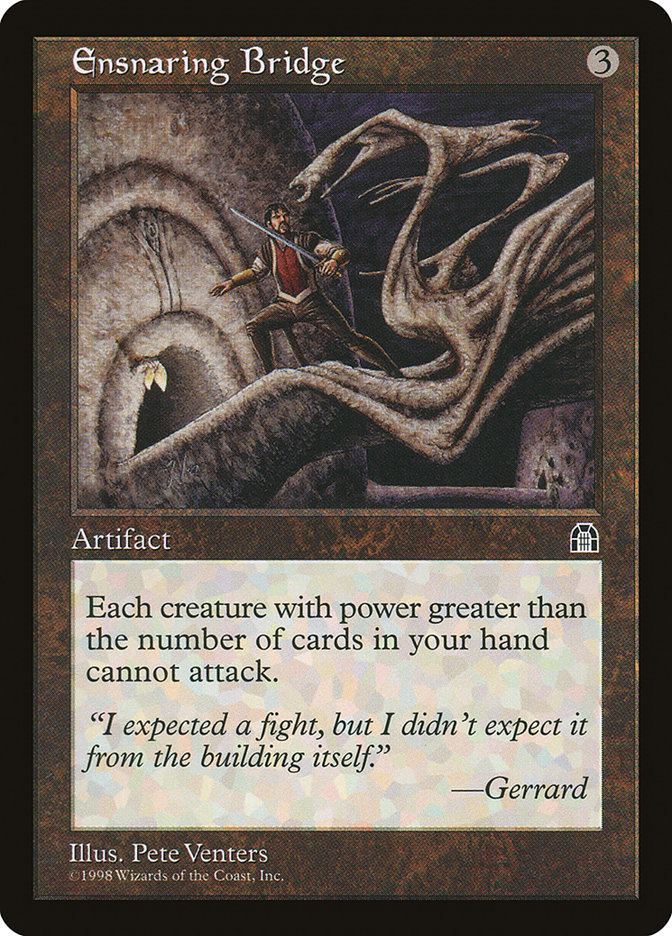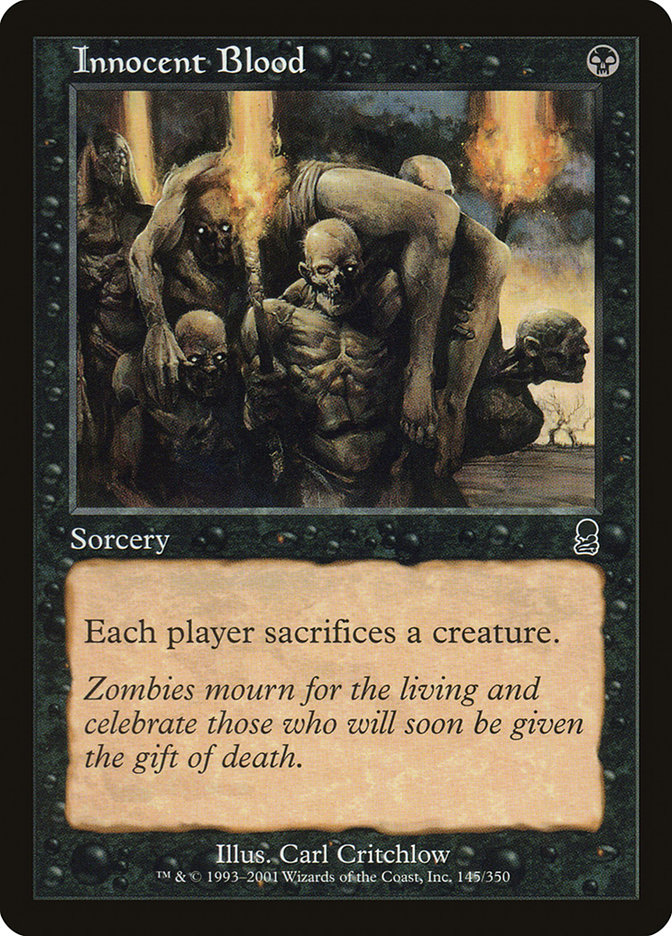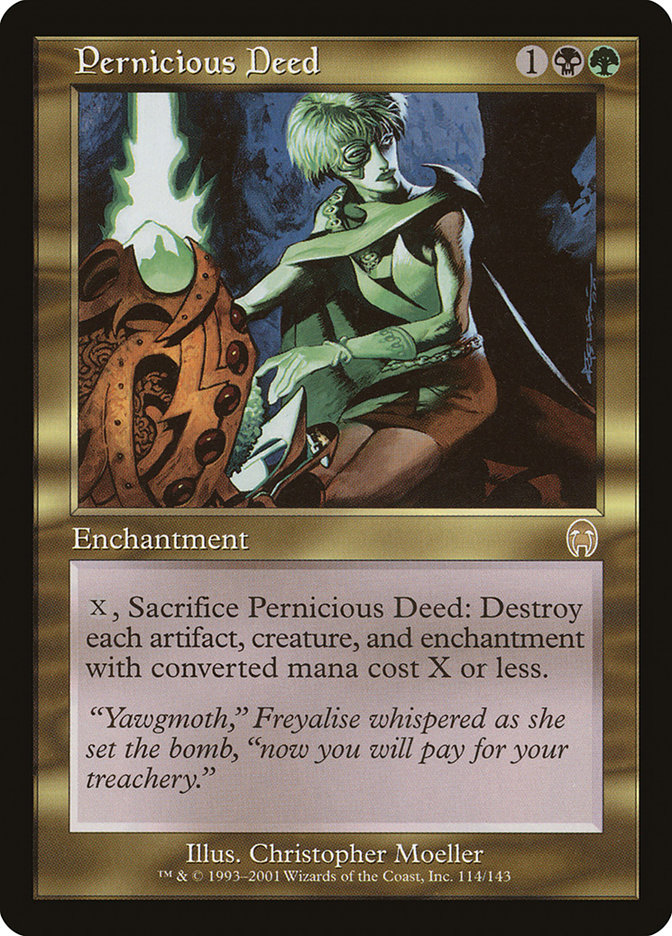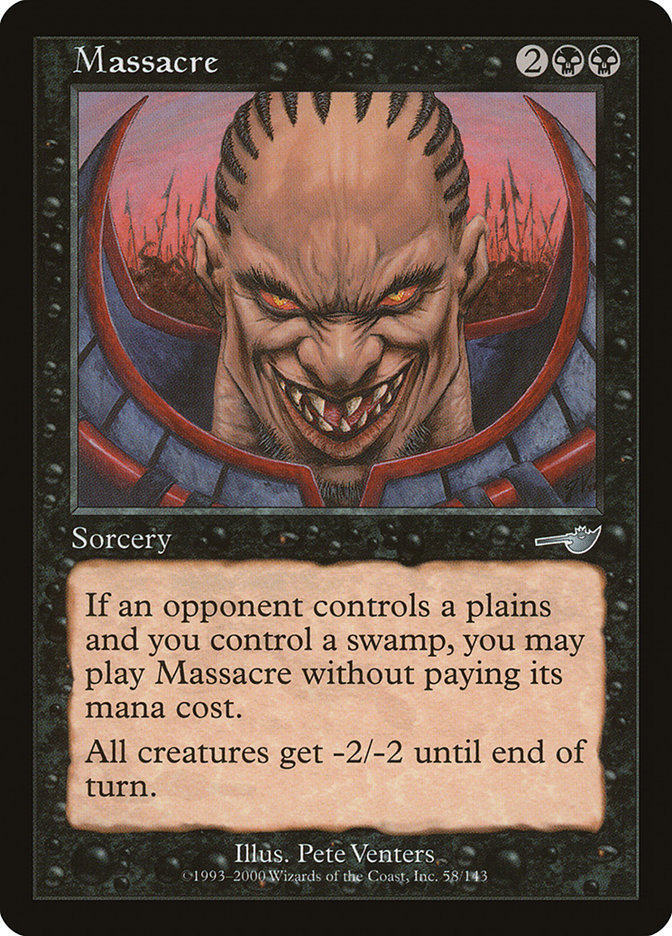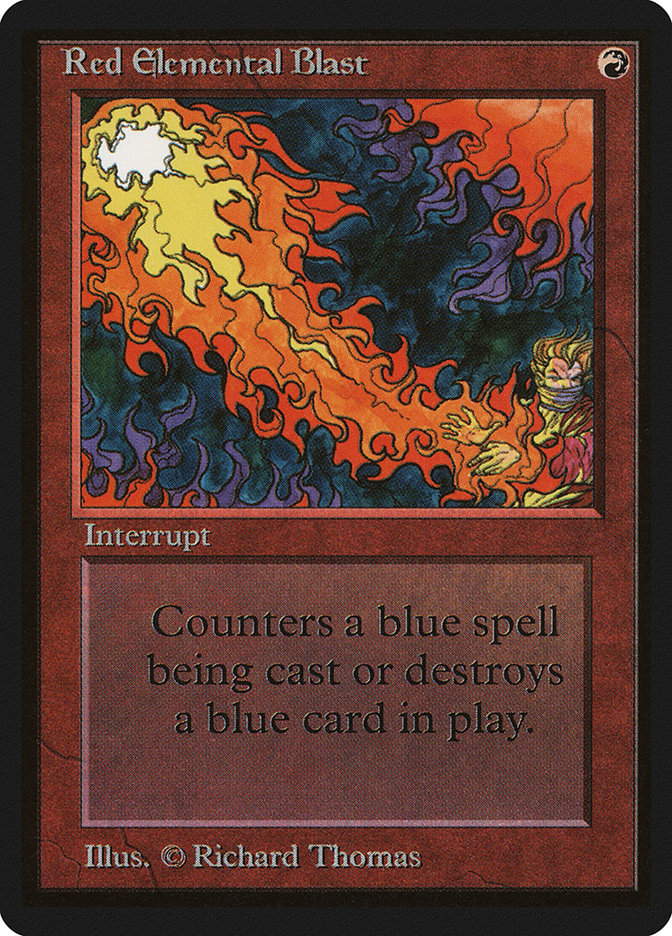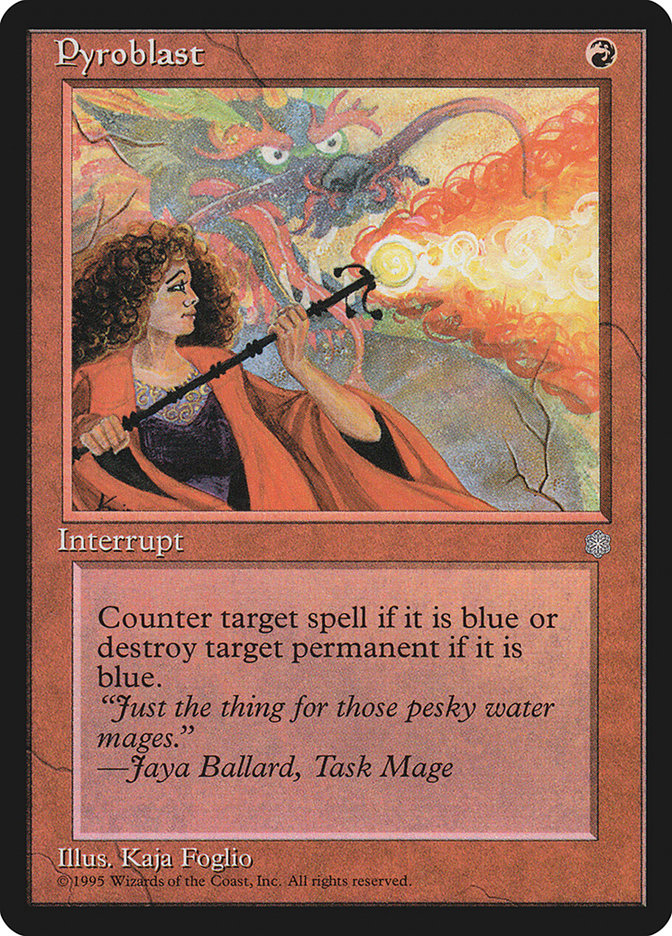I’ve held back on commenting about True-Name Nemesis so far since I wanted to at least see it in action for a little while before making up my mind (not that I didn’t have ideas about the card from the moment it was spoiled). It does cost three mana after all, which is a steep price for a 3/1.
Between recent large events (a GP, Eternal Weekend, the Bazaar of Moxen, and a couple of StarCityGames.com Legacy Opens) and what I’ve seen or heard from players in our smaller events, I feel I now have a reasonable understanding of what the card does to Legacy and clear ideas about its relevance. In short, it’s time I shared my feelings about the Nemesis, and that’s what I’ll be doing today.
Design
This is where I’m most disappointed in True-Name Nemesis to be honest. I had hoped Wizards of the Coast had learned its lesson with Invisible Stalker (probably the most hated card from Innistrad Block in spite of how much more powerful Delver of Secrets, Past in Flames, and Snapcaster Mage are and how infuriating the whole miracle mechanic can be). Creatures that can’t be blocked or targeted but can carry Equipment and Auras are the easiest way to make creature combat into pure goldfishing, removing one of the largest interaction opportunities in the game.
With Nemesis, we have an Invisible Stalker that doesn’t necessarily need anything to boost it—three power is plenty, as the many victims of Vendilion Clique can attest—and not only removes blocking from the relevant ways to interact but also provides an indestructible wall ready to totally brick wall any attempts at useful attacking.
That’s exactly the kind of thing to suck the fun out of a back-and-forth game and that’s going to frustrate players. Yes, I know there’s a certain demographic that loves Invisible Stalker and Nemesis provides them with a tool to live their dreams in Legacy, but those people would have had just as much fun with something that’s simply a 3/1 Invisible Stalker. No need to make it the ultimate blocker too. The happiness of that limited group of players just isn’t worth the annoyance of the significantly larger number of other players that enjoy creatures.
Legacy is already by a fair margin the most widely played format that involves the least combat math and creatures smacking into each other, so compared to what a card like this would do to Standard we’re losing a lot fewer interaction opportunities, which could be understood to mean that Nemesis isn’t such a big deal.
The problem with this idea is that Legacy is as big as it is because you can play almost any kind of strategy you enjoy and manage to make it viable. By reducing the viability of creatures as an out against opposing creature strategies, they suddenly lose a huge amount of value—and given that we have pure spell-based strategies in Legacy, that makes playing creatures an even worse deal than it has been so far.
Color Balance
A final design comment: why in heaven is Nemesis blue? Protection is mainly a white ability, and blue is supposed to have the worst creatures over all. So judging from its ability, Nemesis should have been white, and concerning creature strength among the different colors, it should have been any color but blue. Yet that’s exactly the color they chose to make it in for whatever reason.
In addition, by being blue Nemesis is also most likely to cause trouble in Legacy. Traditionally, blue decks—inherently the strongest color in the format due to Force of Will and Brainstorm—have needed to splash to find creatures to actually dominate the board with. Heavy color splashes come with a significant cost. They open you up to Wasteland blowouts and Blood Moon. By giving blue two of the three strongest "real" creatures (as in creatures you tend to cast to beatdown or block with), the color suddenly (almost) has it all. All we need is a blue Lightning Bolt now and the other colors really don’t have much that blue can’t do as well or at least emulate well enough to ignore the difference. Is there really nobody in R&D that thinks about these things for even five minutes?
Meta Nemesis
Essentially, what Nemesis feels like to me is a R&D thinking mistake along the lines of Mental Misstep. Where for Misstep the idea was to create a free counter nonblue decks could use—forgetting that the blue decks would also have access to it—Nemesis looks as if they meant to create a strong hard-to-deal with creature so that creatures would see more play in Legacy because the format’s incredible removal suite—Swords to Plowshares and Lightning Bolt—suddenly doesn’t deal with all of them anymore.
The problem with this line of thinking is that it’s—at least subconsciously—based on the idea that playing creatures is something you need to do anyway. If every deck is full of creatures, Nemesis is the perfect stalemate breaker. It doesn’t get killed, blocks everything, and beats down as a reasonable clock. A lot of games would still go to the player dropping the first Nemesis, but at least there’s a high likelihood that it has to stay home to block until you’ve stabilized the board through other means, leading to a real game.
In a format such as Legacy, though, the conclusion from seeing Nemesis in action is a different one. There’s now a card that dominates any form of combat and is very hard to kill by any usual means. Well, the best way to deal with such a card isn’t to try to answer it. It’s to make it irrelevant.
You either play a deck that completely goes over the top of True-Name Nemesis (aka a combo deck or something like 12 Post or MUD), doesn’t care about most of its abilities (a creatureless control deck with sweepers, making it basically a three-mana Nimble Mongoose), or just go ahead and play the best Nemesis deck because that’s what’ll beat everything combat based due to the sheer power of our new 1UU enemy once you figure in that the other decks have to prepare for a metagame full of combo and hard control.
In short, the metagame isn’t there yet, but it seems to me that there is almost no valid reason to play a creature deck that can’t use True-Name Nemesis. So if you thought Mental Misstep put the amount of blue cards seeing play over the top, just wait for Nemesis Legacy to shake out.
Best Nemesis
So what is the best Nemesis deck? Well, I think so far we have four contenders, all of which were represented in the GP DC Top 16: Owen Turtenwald U/W/R Delver deck, Sam Black Bant deck, Deshaun Baylock’s Esper Stoneblade deck, and Rudy Briksza Esper Deathblade deck.
Creatures (10)
Lands (20)
Spells (30)

Creatures (15)
- 4 Noble Hierarch
- 2 Knight of the Reliquary
- 1 Qasali Pridemage
- 3 Stoneforge Mystic
- 1 Scavenging Ooze
- 4 True-Name Nemesis
Planeswalkers (1)
Lands (22)
Spells (22)

Creatures (11)
Planeswalkers (2)
Lands (22)
Spells (25)

Creatures (15)
Planeswalkers (2)
Lands (24)
Spells (19)

Yes, two of these four decks don’t even run the full complement of True-Name Nemesis. That’s because they’re already built with Nemesis in mind; only the other two are truly focused on abusing it.
Against the decks mentioned above (combo and hard control), Nemesis is actually a pretty terrible card—basically just a 3/1 for three, not exactly what you want in your deck. It’s still a solid way to give you inevitability, and that’s what Owen and Deshaun use it for. After all, drawing one copy of your invincible threat should usually be enough given that it doesn’t ever die.
The real thing to look out for though is that all four decks use Stoneforge Mystic because that’s what really makes you the best Nemesis deck—the ability to consistently buff it up to a point where it can really take over the game completely. And nothing provides that effect better than Stoneforge Mystic finding ridiculous Equipment. The little Kor Artificer makes sure you have Equipment when you need it but don’t have to fill your deck with clunky cards only to make sure you get to one in time to "combo out" with Nemesis.
Sam’s deck—actually Reid Duke deck as far as I know—and Rudy’s deck on the other hand have something that allows them to jam the full four Nemesises: acceleration. Three mana is quite a lot in Legacy, and to fully abuse the power level of such an "expensive" card, acceleration is key.
Sam’s deck in particular goes full-blown Nemesis mode. It has Noble Hierarch to accelerate it out, the mentioned Stoneforge package to suit it up, and exalted to make it bigger even if you can’t get an artifact to stick around (a single Hierarch makes the usual seven-turn clock into a five-turn clock). In a world of creature decks, this looks hands down like the deck you should be playing from among what I’ve seen so far.
Rudy’s Deathrite Shamans aren’t far behind though. As long as they find enough food, they turn an unequipped Nemesis back into the far more manageable Invisible Stalker on offense and provide a solid clock on a Nemesis-stalled board. They’re also much more flexible when there is no Nemesis involved, which definitely counts for something.
As mentioned above, creature battles aren’t the only thing going on in Legacy, though, and here lies the reason why the two other decks are contenders for the throne. They have room for a lot more disruption than the mana-elf decks do. Because Owen has twelve cheap pieces of countermagic and Deshaun can field a respectable eleven pieces of discard and countermagic (counting Vendilion Clique), their matchups against most of the so-called unfair decks in the format will be much better, especially in game 1.
I’m curious to see what people come up with from these jumping boards, but I’d honestly be surprised if we see many creature decks doing well in the coming months without having the U/W base to support both Stoneforge Mystic and True-Name Nemesis (Merfolk might be one because the lords take over the buffing part very well).
Is Nemesis Broken?
In spite of everything I just said, True-Name Nemesis isn’t broken in the traditional sense of the word. It doesn’t win the game when it comes down, and there will be a large number of diverse archetypes viable in Legacy even with it in the format. The combo decks and semi-broken decks like MUD don’t really care (well, outside of U/W gaining some room in the sideboard), hard control can easily deal with Nemesis, and there will likely be quite a number of different aggro-control and midrange strategies able to coexist (even if most of them will be sporting Nemesis). In short, Nemesis isn’t the end of Legacy, and there will still be a metagame out there. It will be smaller, though, likely about the size of what Mental Misstep left us with, but instead of combo disappearing, nonblue creature decks will.
Now, I’m probably the last person out there you’d expect to really bemoan midrange suffering—I still hate creatures—but I strongly dislike what I see coming anyway. Legacy is as great as it is because you can run into anything during the course of a tournament, and Nemesis strongly reduces this variety by making the incentive to play blue even bigger than it was before.
Add to that how dumb Nemesis games feel—once Nemesis is online, combat is either goldfishing or pointless—and I’d be much happier if that particular card had never seen the light of day.
True-Name Nemesis is particularly cruel because it is a creature but hurts those players who love to play creature battles. Instead of tight races and combat math influenced by topdecks and good play, the player to first resolve their three-mana spell is suddenly so far ahead that coming back will be almost impossible for their opponent. The amount of board control it exerts, especially when buffed up, is just too big.
It makes midrange matches suddenly feel like playing Show and Tell. And if you didn’t know, Show and Tell is the most despised cards in Legacy for a reason—suddenly games are decided by a single spell resolving. The actual combo is easy to execute and the way there quite straightforward. Most Legacy players love the format because it is so diverse and skill testing. Show and Tell pushes the format hard in the opposite direction.
The same is true for Nemesis in creature-based matchups, which is what makes it such a terrible card to force on creature mages. The ones that enjoy red-zone interaction suddenly have to abandon it as much as possible even when playing creature-based decks only to have it replaced by the mondo-combo of Nemesis plus any Equipment.
In short, I’m not surprised that I haven’t talked to a single player who thinks having Nemesis in the format is a good thing. There actually seem to be more players ready to defend Mental Misstep and Show and Tell than there are to defend Nemesis. And basically any defense of Nemesis I’ve heard or seen so far boiled down to "well, I don’t think it’s broken, so it should be legal. But yes, I hate it too."
Dealing With Your Nemesis
So is there nothing we can do? Are we doomed to get killed by the 3/1? No, obviously not. There actually are a ton of answers to True-Name Nemesis in the card pool, and I doubt it will dominate the format as far as Top 8s are concerned. Diabolic Edict and sweeper effects are the obvious things that come to mind, but there are a lot of other options. Let’s take a look at a couple of interesting ones:
This is the card I actually expect to spike in price the most as the result of True-Name Nemesis. It’s close to powerful enough to just play maindeck anyway because the triggers are ridiculous, and in a world with the Nemesis, protection from blue is probably the best one there is—it means you can successfully attack after all. Add the fact that it fits perfectly into the Stoneforge Mystic strategy you probably should want to be running (see above for how to build the best Nemesis deck) and we have what I expect to be the most common maindeck answer to the Merfolk Progenitus.
I featured a White Weenie deck built around this card before, and Meekstone has gained a ton of value now that it also deals with the most resilient threat you’re likely to encounter. If you aren’t planning on resolving any three-plus power creatures, Meekstone looks really good right now.
Elves is a deck, and Plague is absurdly good against them. Add to that how good naming Human usually is against decks sporting Thalia and we have a card already close to being worth playing. Now that it also kills Nemesis without (presumably) hurting your own stuff, we have a flexible and permanent way to deal with it. It only took a bioweapon to do it.
If you’re in B/W and run creatures, this should almost definitely make it into your sideboard or even maindeck now. It’s a mini Overrun, deals with Mother of Runes or Thalia at the same time it kills Nemesis, and does all of that at instant speed. It’s even a reasonable sideboard card against Storm because it can deal with Empty the Warrens and Xantid Swarm.
Edict effects are a good way to deal with True-Name Nemesis, and Liliana is even better. The second-most powerful planeswalker in the game has already been a format staple, and being one of the few answers to Nemesis on that power level doesn’t exactly weaken her resume. If you aren’t ready to aim straight for Nemesis yet, this is your go-to solution.
For when you want to hit both of the format’s herp-a-derp effects at the same time. As long as you keep casting your spells, neither Nemesis nor Emrakul will be able to annoy you.
When creatures are hard to target and often blanked, not having your own creatures is generally a pretty good place to be. In such a creatureless deck, Innocent Blood is an extremely efficient removal spell that also happens to deal with the untargetable creatures. And once you’re down that road, Pernicious Deed suddenly beckons strongly seeing as you won’t kill many of your own cards and get a powerful sweeper effect. I could very well see these two making a comeback as the backbone removal suite of a powerful control deck in the near future.
This is already a very solid card against Death and Taxes, and the fact that most Nemesises will be paired with Plains (to cast those Stoneforge Mystic) should allow you to super Pyroclasm for free a lot of the time. Definitely a card a lot more black decks should consider now that they need something that doesn’t target to actually defend themselves.
The easiest way to kill a Nemesis is to do so before it has chosen whom to hate aka on the stack. The blasts are very cheap and extremely flexible—especially given how blue I expect the metagame to become—so they make for a perfect first line of defense.
There are lots and lots of other ways to kill a True-Name Nemesis—Golgari Charm, for example, is sure to see a lot more play—and that’s where I place my hopes. If we can find a sufficient number of efficient ways to kill a one-toughness protection-from-everything creature that also remain flexible enough to not open you up against the noncreature decks too much, Nemesis impact will be managed.
Fleeing The Enemy
So does True-Name Nemesis need the banhammer treatment? I don’t think it does; however, I’d much enjoy seeing it happen. Yes, it’s going to further limit what you can do in the format and will make blue an even more dominant color than it already is, but it won’t be able to actually dominate the format itself. There are enough decks out there that can go over the top of it or ignore most of its special talents to make sure of that. There are also enough answers out there to build decks that will successfully deal with it for those willing to move in that direction.
What True-Name Nemesis does however is to force a massive shift in the Legacy metagame, one that goes in a direction most players won’t be too happy with. There will be more blue, more combo, and hard control; there will be fewer midrange decks, and the games between them will include significantly more one-sided blowouts. In short, the format will be worse but probably still by far the most diverse and skill-testing one there is.
That’s it for today; feel free to share your opinion about True-Name Nemesis or my writing in the comments. I read all of them every week.
Until next time, choose your enemies wisely!

